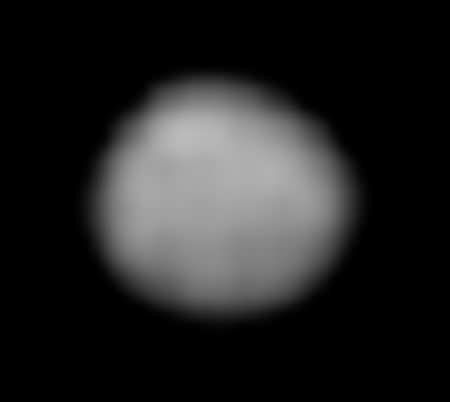Planetoid is another term for asteroids, which are also called minor planets. Planetoids are small celestial bodies that orbit the Sun. Planets are simply defined as asteroids, but the term asteroid is not well defined either. In 2006, The International Astronomical Union (IAU) defined it as a “small Solar System body” (SSSB), which does not really tell us anything either. Webster’s Dictionary defines an asteroid as, “any of the thousands of small planets ranging from 1,000 km (621 mi) to less than one km (0.62 mi) in diameter, with orbits usually between those of Mars and Jupiter; minor planet; planetoid.”
Asteroids – planetoids – were first discovered in 1801, and many more have been discovered since then. Up until 1977, almost all the asteroids discovered were near Jupiter. However, then astronomers began to discover planetoids even farther out and started calling them centaurs and trans-Neptunian objects (TNOs). When a region of space in the outer Solar System filled with celestial bodies was discovered, it was called the Kuiper Belt and the objects in it were called Kuiper Belt Objects (KBOs). The large number of synonyms for planetoids is one reason why keeping these terms straight is so difficult.
Some of the largest planetoids are spherical and look like tiny versions of planets. The smaller ones are irregular in shape though. The objects range in size from around ten meters to hundreds of kilometers in diameter. Objects smaller than ten meters are called meteoroids. Unfortunately, astronomers do not know that much about the materials that make up planetoids. They are believed to be composed of various materials including ice, rock, and different metals.
Most planetoids are in a region called the asteroid belt, which is situated between Mars and Jupiter. There are millions of planetoids in this region. Despite the millions of objects, all of them combined are believed to have a mass of only about 4% of the Moon’s mass. After being discovered, the planetoids are given a temporary designation. If they are officially recognized, they are given a number and maybe a name. The first few planetoids were given symbols just like the planets. All except one of the first fifteen asteroids were given extremely complex symbols. For example, one symbol was a star with a plant growing out of it. However, that soon ended when astronomers realized that there were many more planetoids. Planetoids, and other celestial bodies, are a subject of study by astronomers who hope to learn more about how the universe was formed from these ancient rocks.
Universe Today has articles on minor planets and planetesimals.
Check out articles on asteroids and planetoids beyond Pluto.
Astronomy Cast has an episode on asteroids.
References:
NASA StarChild: The Asteroid Belt
Planet-Like Body Discovered at Fringes of Our Solar System

